Kyushu Expressway Pass (KEP): Pricing, Coverage, and Where to Buy
The Kyushu Expressway Pass (KEP) is a highway pass introduced by the Kyushu branch of West Nippon Expressway Company Limited (NEXCO West Japan). Following the Hokkaido Expressway Pass (HEP) by NEXCO East Japan and the Central Nippon Expressway Pass (CEP) by NEXCO Central Japan, KEP is the third highway pass launched by Japan’s expressway companies. Foreign visitors renting a car in Kyushu can purchase KEP at designated rental car branches, allowing unlimited use of Kyushu’s expressways at a fixed, discounted rate.
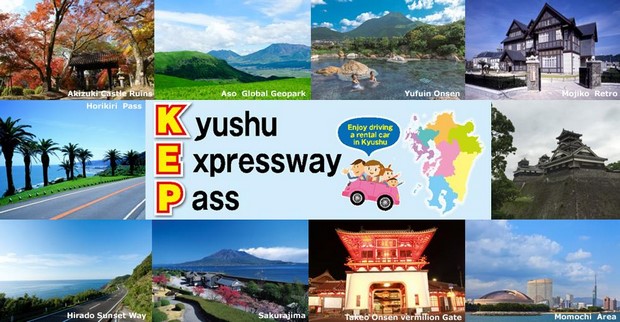
In essence, KEP shares the same features, purchase conditions, and usage rules as other expressway passes offered by NEXCO. However, during its initial two years after launch in early 2014, KEP was not available year-round but only during specific periods. Since September 1, 2016, it has been available for purchase throughout the year.
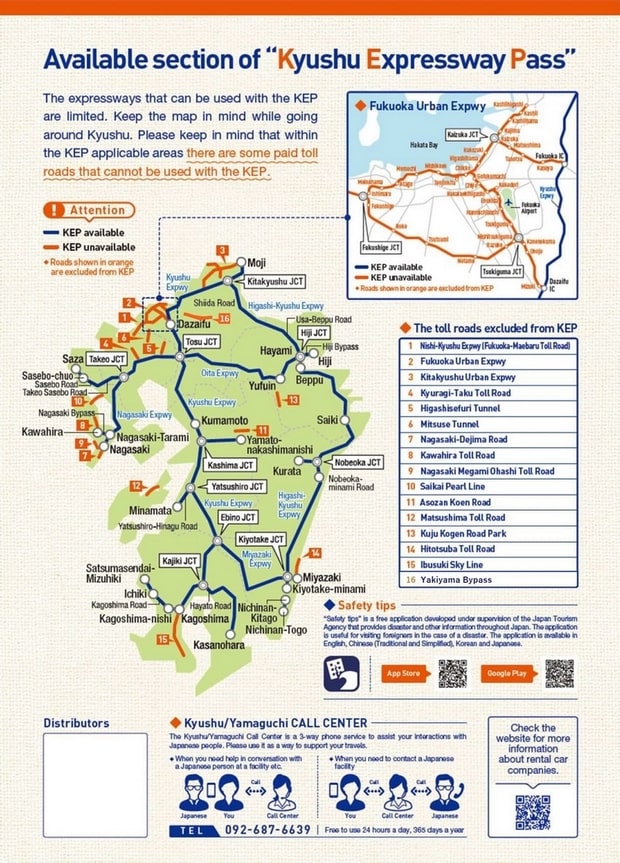
Note: In March 2017, NEXCO West Japan introduced another expressway pass, the “San’in-Setouchi-Shikoku Expressway Pass” (SEP), which covers highways in the San’in, Sanyo, and Shikoku regions. Some rental car companies in Fukuoka also sell SEP, so if your road trip starts from Fukuoka and heads to Yamaguchi or Hiroshima, you may consider purchasing SEP instead.
Alternative Option: Starting June 1, 2016, Japan’s ToCoo! Car Rental launched the ToCoo! Expressway Pass (TEP). TEP includes a nationwide version as well as a Kyushu version, offering broader coverage than KEP. With KEP’s price increase in October 2024, TEP has become a more cost-effective option.
Table of Contents
Eligibility and Coverage of Kyushu Expressway Pass
The Kyushu Expressway Pass is available only to foreign tourists (or Japanese expatriates living abroad) renting a car in Kyushu. It allows unlimited use of expressways managed by NEXCO West Japan in Kyushu, with some exceptions, such as the Fukuoka Urban Expressway around Fukuoka City, the Kitakyushu Urban Expressway near Kitakyushu, the Kanmon Bridge, the Kanmon Tunnel, the Kawahira Toll Road near Nagasaki, the Binanagasaki Dejima Road, and the Ibusuki Skyline near Kagoshima.
Below is a map showing KEP’s coverage area and the roads excluded from the pass.
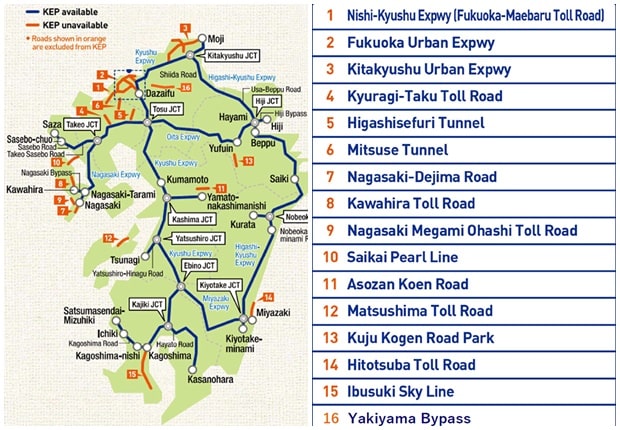

To help you understand which highways in Kyushu are covered by KEP and which require additional fees, we’ve created the following Google Map. It highlights the highways that can be used for free with KEP, those excluded (requiring extra payment upon returning the car), and the locations of all rental car branches where KEP can be purchased.
Generally, KEP’s coverage is limited to Kyushu, making it suitable only for road trips within the region. However, if your itinerary includes parts of Yamaguchi Prefecture on Honshu, KEP might still be an option, though its cost-effectiveness depends on comparing highway tolls.
KEP Pricing
Like HEP and CEP, KEP offers unlimited highway access for a fixed price during its validity period. The pass is available for durations ranging from 2 to 10 days. As of October 1, 2019, prices ranged from 3,600 yen (2 days) to 11,700 yen (10 days), remaining unchanged when sales resumed on April 10, 2023. However, starting October 1, 2024, KEP prices will increase significantly, with hikes ranging from 72% to 103%, averaging 93%—nearly double the original cost.
| Duration | Price Before October 1, 2024 | Price From October 1, 2024 |
|---|---|---|
| 2 Day | 3,600 yen | 6,200 yen |
| 3 Day | 4,600 yen | 8,400 yen |
| 4 Day | 5,600 yen | 10,600 yen |
| 5 Day | 6,600 yen | 12,800 yen |
| 6 Day | 7,600 yen | 15,000 yen |
| 7 Day | 8,700 yen | 17,200 yen |
| 8 Day | 9,700 yen | 19,400 yen |
| 9 Day | 10,700 yen | 21,600 yen |
| 10 Day | 11,700 yen | 23,800 yen |
On average, Japanese expressway tolls cost about 25 yen per kilometer (28 yen with 10% consumption tax), while urban expressways charge 30 yen per kilometer (33 yen with tax). If your daily highway distance exceeds 50 km, purchasing KEP at the old prices would have been cost-effective. Here are some examples of potential savings, though they use 2015 pricing.
However, with KEP’s price nearly doubling from October 1, 2024, and no equivalent increase in toll fees, purchasing KEP is generally no longer cost-effective.
Below is a breakdown of my highway tolls during a 6-day road trip in Kyushu. After deducting the 2,230 yen toll for the Fukuoka Urban Expressway (not covered by KEP), the remaining tolls amounted to about 10,000 yen. Compared to the old 6-day KEP price of 7,600 yen, this represented a 25% saving. However, with the new 6-day KEP price rising to 15,000 yen, buying the pass would now result in a loss of nearly 5,000 yen.
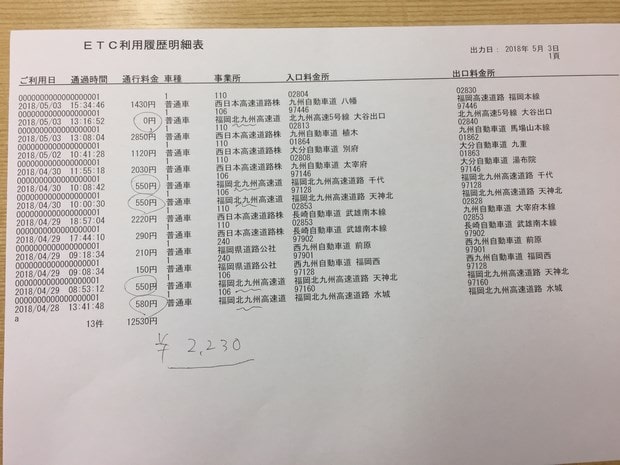

After KEP’s significant price hike, the Kyushu version of ToCoo!’s TEP also increased its prices 10 days later. Despite the hike, TEP remains cheaper and covers the Fukuoka and Kitakyushu Urban Expressways. If you need a Kyushu expressway pass, consider TEP’s Kyushu version. Below is a price comparison between TEP Kyushu and KEP.
|
Duration |
TEP Kyushu |
KEP* |
|---|---|---|
|
1 Day |
5,830 yen |
Not available |
|
2 Day |
5,830 yen |
6,530 yen |
|
3 Day |
7,730 yen |
8,730 yen |
|
4 Day |
9,630 yen |
10,930 yen |
|
5 Day |
11,530 yen |
13,130 yen |
|
6 Day |
13,430 yen |
15,330 yen |
|
7 Day |
15,330 yen |
17,530 yen |
|
8 Day |
17,230 yen |
19,730 yen |
|
9 Day |
19,130 yen |
21,930 yen |
|
10 Day |
21,030 yen |
24,130 yen |
(*Note): Rental companies charge an additional 330 yen for ETC card rental when purchasing KEP. Since TEP’s price already includes this fee, the KEP prices above include the 330 yen for fair comparison.
For example, a 4-day road trip from Fukuoka to Yufuin, Beppu, Kumamoto, and back to Fukuoka covers about 440 km of expressways, with tolls totaling approximately 13,000 yen. Purchasing a 4-day KEP would cost 10,930 yen, saving about 2,000 yen, while a 4-day TEP Kyushu would cost 9,630 yen, saving around 3,000 yen.
Where to Buy
KEP can only be purchased when picking up a rental car at designated branches. To buy KEP, you must rent from one of these companies at a participating location. Currently, 13 rental car companies offer KEP, including major ones like Times Car Rental, Orix Rent a Car, Nissan Rent a Car, Nippon Rent a Car, and Sky Rent a Car, as well as eight smaller regional companies: Carshop 3seven77, Rent-A-Car STYLE, NICONICO RENT A CAR, Hako Rent-a-Car, Hot-ecolife, Eisan, Car-rental Fukuoka TJ, Local・Sustainable, and Hi-Hi Car Rental. These 13 companies have a total of 83 branches where KEP is available. For a detailed list, refer here.
Note: Toyota Rent a Car and Budget Rent a Car no longer sell KEP.
Below are the branch lists for the five major rental companies (Times Car Rental, Orix Rent a Car, Nissan Rent a Car, Nippon Rent a Car, and Sky Rent a Car). To help locate these branches, we’ve marked their locations on the Google Map above showing KEP’s coverage. (Note: Sky Rent a Car branches are not marked on the map.)
Note: The following lists only include branches for Times, Orix, Nissan, Nippon, and Sky. The eight smaller companies are not listed here.
Note: Due to rental companies’ operational decisions, participating KEP branches may change. The lists below are accurate as of the article’s last update (May 2025). For the latest information, check the official websites before renting.
1. Times Car Rental Branches
Times Car Rental has 15 branches:
- Fukuoka
- Fukuoka Airport Branch
- Fukuoka Airport International Terminal Branch
- Hakata Station Front Branch
- Hakata Station Hakata Exit Branch
- Higashi Hie Branch
- Kokura Station Shinkansen Exit Branch
- Saga
- Takeo Onsen Station Branch
- Nagasaki
- Nagasaki Airport Branch
- Nagasaki Station Street Branch
- Oita
- Oita Airport Front Branch
- Beppu Station Front Branch
- Miyazaki
- Miyazaki Airport Front Branch
- Miyazaki Station Front Branch
- Kagoshima
- Kagoshima Airport Branch
- Kagoshima Chuo Station Branch
2. Nissan Rent a Car Branches
Nissan Rent a Car has 17 branches:
- Fukuoka
- Fukuoka Airport Branch
- Fukuoka Airport International Terminal Branch
- Hakata Shinkansen Station Front Branch
- Hakata Station Marui Branch
- Hakata Station South Branch
- Tenjin Branch
- Nishijin Branch
- Ohashi Station Front Branch
- Kitakyushu Airport Branch
- Kokura Shinkansen Station Front Branch
- Kurosaki Branch
- Saga
- Saga Airport Counter Branch
- Kumamoto
- Kumamoto Airport Branch
- Kumamoto Station Front Branch
- Miyazaki
- Miyazaki Airport Branch
- Kagoshima
- Kagoshima Airport Branch
- Kagoshima Chuo Station Front Branch
3. Orix Rent a Car Branches
Orix Rent a Car has 20 branches:
- Fukuoka
- Fukuoka Airport Port Branch
- Fukuoka Airport Terminal East Branch
- Fukuoka Airport International Terminal Branch
- Hakata Station Hakata Exit Branch
- Hakata Station Chikushi Exit Branch
- Tenjin Daimyo Branch
- Kokura Station Shinkansen Exit Branch
- Kitakyushu Airport Branch
- Saga
- Saga Station Front Branch
- Shin-Tosu Station Branch
- Nagasaki
- Nagasaki Airport Branch
- Oita
- Oita Airport Branch
- Oita Station Front Branch
- Kumamoto
- Kumamoto Airport Mashiki Branch
- Kumamoto Station Shinkansen Exit Branch
- Miyazaki
- Miyazaki Airport Phoenix Branch
- Miyazaki Airport Bears Branch
- Nobeoka Station Front Branch
- Kagoshima
- Kagoshima Airport Branch
- Kagoshima Chuo Station Front Branch
4. Sky Rent a Car Branches
Sky Rent a Car has 13 branches:
- Fukuoka
- Fukuoka Airport Branch
- Hakata Station Front Branch
- Kokura Station Front Branch
- Kitakyushu Airport Branch (Kitakyushu Airport Counter)
- Nagasaki
- Nagasaki Airport Branch
- Nagasaki Megami Branch
- Kumamoto
- Kumamoto Airport Branch
- Kumamoto Station Front Branch
- Oita
- Oita Airport Branch
- Oita Hanazono Branch
- Miyazaki
- Miyazaki Airport Branch
- Kagoshima
- Kagoshima Airport Branch
- Kagoshima Chuo Station Front Branch
5. Nippon Rent a Car Branches
Nippon Rent a Car has 1 branch:
- Fukuoka
- Fukuoka Airport International Terminal Branch
Since the rented ETC card must be returned when dropping off the car, you generally need to return the car to the same branch where you picked it up. However, most rental companies allow returns at other KEP-participating branches—confirm this with the rental company in advance.
NEXCO West Japan does not require the pass duration to match the rental period exactly, but many rental companies enforce this rule. Additionally, KEP cannot be purchased when renting a kei car (660cc or smaller).
You can rent from these companies through their official websites or via rental agents like Rakuten Travel Car Rental or ToCoo Car Rental. For rental tutorials, refer to the related articles below. After booking, contact the rental company to reserve an ETC card to avoid shortages at pickup.
Currently, Times Car Rental, Orix Rent a Car, Nissan Rent a Car, and Nippon Rent a Car have Chinese-language websites with inquiry forms. To reserve KEP, fill out the form after completing your rental booking.
How to Use
KEP requires an ETC card, which must be rented from the car rental company for a fee (usually 330 yen, including tax).
Before entering an expressway, insert the ETC card into the vehicle’s reader with the arrow facing inward. The reader’s light should change from red/orange to green/blue. If not, flip the card and try again.
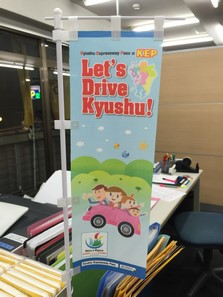

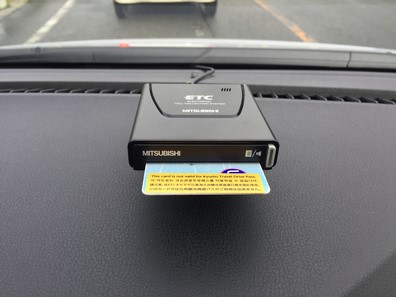

The ETC card records all highway usage and tolls, which are settled upon returning the car. If all routes are within KEP’s coverage, no additional fees apply. For non-covered roads, extra tolls must be paid (discounted on weekends/holidays).
Below is my toll breakdown from a Kyushu road trip, showing the 2,230 yen extra charge for the Fukuoka Urban Expressway.


Agoda Booking Deals!
【Agoda 10% Discount Code (incl. taxes)】(Valid worldwide, with discounts applied to taxes and service fees.)
【Bonus Guide: How to Use Agoda Promo Codes? | How to Avoid Agoda’s 5% Service Fee?】
Notes on Using Non-Covered Highways and Additional Toll Calculations
The ETC card provided with KEP can also be used on non-covered highways as a regular ETC card. Any non-covered tolls will be recorded and paid when returning the car.
If your trip includes both covered and non-covered highways, note the toll calculation rules to avoid unnecessary fees.
After the pandemic, KEP’s rules for non-covered highways were simplified and now align with Central Nippon Expressway Pass standards.
Per the official website, additional tolls are calculated as follows:
- Entering from a covered area and exiting in a non-covered area: Pay only the non-covered segment. (Old rules charged the full toll.)
- Entering from a non-covered area and exiting in a covered area: Pay only the non-covered segment. (Old rules charged the full toll.)
- Entering and exiting in non-covered areas: Pay the full toll, even if passing through covered areas.
Most Kyushu expressways are covered by KEP, with exceptions like the Fukuoka and Kitakyushu Urban Expressways. These non-covered highways have toll gates at junctions with KEP-covered roads, ensuring clear ETC records. Thus, the new rules rarely differ in practice.
When entering and exiting non-covered areas without intermediate toll gates, the full toll applies because the ETC lacks segment data. However, if toll gates or flat-rate sections exist (e.g., Fukuoka Urban Expressway charges a fixed 630 yen on weekdays), only the non-covered portion is charged.
For example, entering from the non-covered Fukuoka Urban Expressway, driving through the Kyushu Expressway, and exiting via the non-covered Kitakyushu Urban Expressway would require paying only the two urban expressway fees, with the Kyushu Expressway portion covered by KEP.
Under the new rules, entering from a covered area and exiting in a non-covered area (e.g., driving from Kyushu to Honshu via the Kanmon Bridge) charges only the non-covered segment (e.g., from Moji IC to Honshu). However, if unsure whether rental companies can calculate this accurately, follow the old method: exit and re-enter at Moji IC when crossing between Kyushu and Honshu.
Below is the route for exiting and re-entering at Moji IC, with street views.
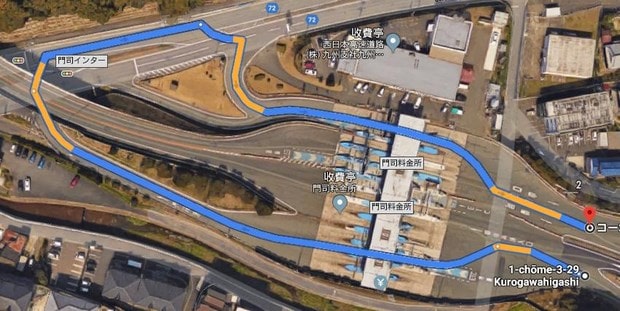

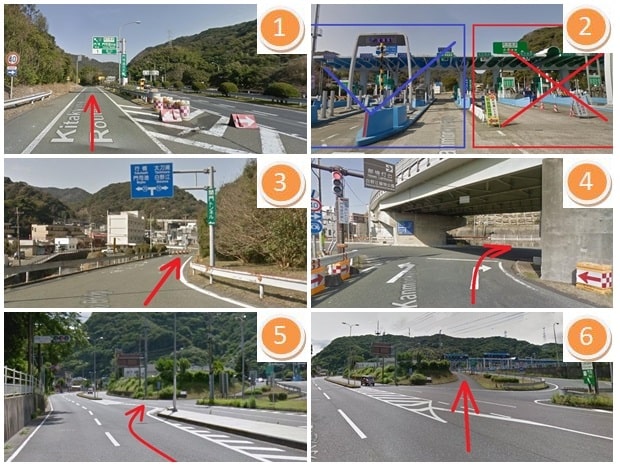

Tolls for Using Fukuoka Urban Expressway and Kitakyushu Urban Expressway
If you live in Fukuoka City, you will likely use the Fukuoka Urban Expressway frequently. Additionally, if you travel to Kokura or Moji Port, you will also use the Kitakyushu Urban Expressway. However, the KEP does not cover the Fukuoka Urban Expressway or the Kitakyushu Urban Expressway, so tolls for these urban expressways must be paid separately. Both expressways operate on a flat-rate toll system. Currently, the toll for the Fukuoka Urban Expressway is 630 yen on weekdays and 590 yen on weekends and holidays. The toll for the Kitakyushu Urban Expressway is 520 yen on weekdays and 510 yen on weekends and holidays.
Since these expressways use a flat-rate toll system, toll gates are only installed at the entrances, not the exits. For example, if you enter the Fukuoka Urban Expressway from an entrance within Fukuoka City, there will be a toll gate at the entrance. If you use an ETC card, it will record the 630 yen toll (on weekdays) for using the Fukuoka Urban Expressway. If you continue onto the Kyushu Expressway, another toll gate will record the starting point of your Kyushu Expressway usage, so there is no need to exit the expressway.
If you enter the Fukuoka Urban Expressway from the Kyushu Expressway, there will be a toll gate between the two expressways to record your exit from the Kyushu Expressway. However, there is no toll gate at the exit after entering the Fukuoka Urban Expressway. As a result, your ETC travel record may only show the toll from the Kyushu Expressway entrance to the Fukuoka Urban Expressway toll gate, without displaying the Fukuoka Urban Expressway toll. This can sometimes lead to rental car company staff overlooking the 630 yen (or 590 yen) toll for the Fukuoka Urban Expressway.
Reference Materials:
Related posts:
- Visit Japan Web (VJW) Guide for Filling Out Japan Arrival QR Code
- Tateyama Kurobe Opening Dates, Transportation, Attractions, Luggage Delivery, and Travel Guide
- Guide to Purchasing Tateyama Kurobe Tickets, Train Tickets, JR Passes, and Booking Ride Times
- Tateyama Kurobe Snow Otani: Opening Hours, Snow Wall Height, and Travel Guide
- Tateyama Kurobe Travel Guide: One-Day Itinerary and Recommended Routes (JR and Self-Driving)
- Alpine-Takayama-Matsumoto Area Tourist Pass: Purchase, Exchange, Usage, and Riding Guide
- Japan Universal Studios Tickets, Fast Pass, VIP Tour: Official Website Purchase Guide
- Osaka Mint Bureau Sakura Avenue Reservation Guide
- Japan Kyushu Kawachi Fujien: Wisteria Blooming Season, How to Purchase Tickets, and Transportation Guide
- Osaka Light Festival: Event Details, Schedule, Venues and Transportation
- Japan Toyota Rent a Car Guide: Official Website Rental Process and Discounts!
- Kaiten-Sushi Nemuro Hanamaru: Locations, Crowds, Reservations and Queue-Skipping Tips for Tokyo and Sapporo Branches
- Japan Accommodation Tax: Which Cities Levy It? Who Needs to Pay? How to Pay?
- Japan Rakuten Travel Promo Codes, Latest Discounts, and Booking Tutorial
- How to get and use the 10% Agoda Discount Code

